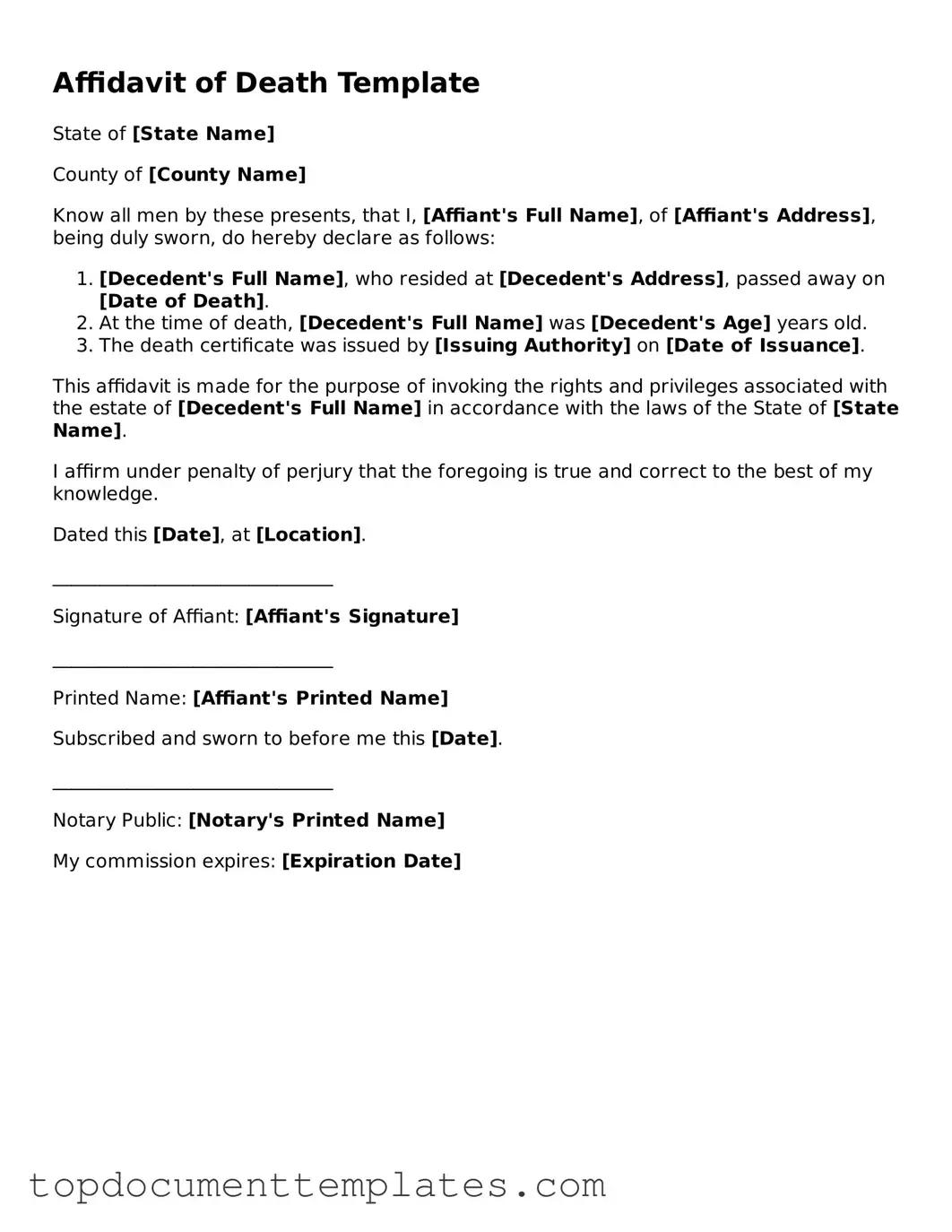The Affidavit of Death form serves as a vital document in the process of settling the affairs of a deceased individual. This legal instrument is often used to formally declare the passing of a person, providing essential information such as the deceased's full name, date of death, and any relevant details about their estate. By completing this form, individuals can facilitate the transfer of assets, initiate probate proceedings, or address various legal matters that arise after a person's death. It is typically signed by someone with knowledge of the deceased’s passing, often a family member or close associate, and may require notarization to ensure its authenticity. Understanding the significance of this form can ease the burden on grieving families, helping them navigate the complexities of estate management during a challenging time. In essence, the Affidavit of Death is not just a formality; it plays a crucial role in honoring the legacy of the departed while ensuring that their wishes and obligations are respected and fulfilled.
